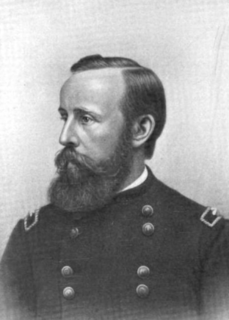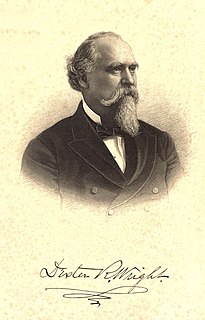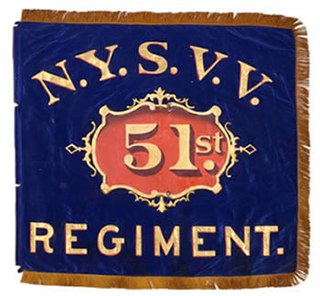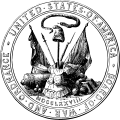Related Research Articles

USS Southfield was a double-ended, sidewheel steam gunboat of the Union Navy during the American Civil War. She was sunk in action against the Confederate ironclad ram CSS Albemarle during the Battle of Plymouth (1864).
CSS Raleigh was originally a small, iron-hulled, propeller-driven towing steamer operating on the Albemarle and Chesapeake Canal. She was taken over by the State of North Carolina in May 1861, and transferred to the Confederate States the following July. Her commanding officer during 1861–1862 was Lieutenant Joseph W. Alexander. Her entire service was in coastal waters of North Carolina and Virginia and in the James River as part of the James River Squadron.

The Army of the James was a Union Army that was composed of units from the Department of Virginia and North Carolina and served along the James River during the final operations of the American Civil War in Virginia.
The Army of the Ohio was the name of two Union armies in the American Civil War. The first army became the Army of the Cumberland and the second army was created in 1863.
The 9th New Jersey Infantry Regiment was an American Civil War infantry regiment from New Jersey that served from October 1861 through July 1865 in the Union Army. The regiment got its nickname, Jersey Muskrats, during the Battle of Roanoke Island when they successfully "sloshed through shoe sucking mud into waist deep water in "division" formation", giving the regiment a two-company front flanking the enemy. The regiment was the last to leave the state in 1861 but the first to see battle.

Rush Christopher Hawkins was a lawyer, Union colonel in the American Civil War, politician, book collector, and art patron. He was mustered out of the Union Army in 1863 but served in the New York Militia in 1865. In 1866, in consideration of his prior service, he was nominated and confirmed for appointment to the grade of brevet brigadier general of volunteers to rank from March 13, 1865.
USS Henry Brinker (1861) was a small steamship acquired by the Union Navy during the American Civil War. She was placed into service as a gunboat and assigned to the blockade of ports of the Confederate States of America.
4th Rhode Island Infantry Regiment was organized during the American Civil War from 1861 and 1864.

The 8th Connecticut Infantry Regiment was an infantry regiment that fought in the Union Army during the American Civil War.
Charles A. Heckman was a brigadier general in the Union Army during the American Civil War. He fought in many of the early battles in North Carolina and later served in the Army of the James during the siege of Petersburg.

Edward Harland was a Union general during the American Civil War. He was associated with early battles of the IX Corps as well as Union involvement in North Carolina and the Tidewater region of Virginia.
Burnside's North Carolina Expedition was a series of engagements fought along the North Carolina Coast between February and June 1862. The expedition was part of Winfield Scott's overall Anaconda Plan, which aimed at closing blockade-running ports inside the Outer Banks. The amphibious operation was carried out primarily by New England and North Carolina troops under Brig. Gen. Ambrose E. Burnside and assisted by the North Atlantic Blockading Squadron under Captain Louis M. Goldsborough.
Battery F, 1st Rhode Island Light Artillery Regiment was an artillery battery that served in the Union Army during the American Civil War. The battery briefly served as cavalry, March 20 to May 18, 1862.
During the American Civil War, a department was a geographical command within the Union's military organization, usually reporting directly to the War Department. Many of the Union's departments were named after rivers or other bodies of water, such as the Department of the Potomac and the Department of the Tennessee. The geographical boundaries of such departments changed frequently, as did their names. As the armies became larger Departments began to be subordinated to Military Divisions, and the Departments were often sub divided into Districts and from 1862 Subdistricts. Much information on Civil War departments can be found in Eicher & Eicher, Civil War High Commands.
The 11th Connecticut Infantry Regiment was an infantry regiment that served in the Union Army during the American Civil War.

The 15th Connecticut Infantry Regiment was an infantry regiment that served in the Union Army during the American Civil War.
The 21st Connecticut Infantry Regiment was an infantry regiment that served in the Union Army during the American Civil War.
The 25th Regiment Massachusetts Volunteer Infantry was an infantry regiment that served in the Union Army during the American Civil War.

The 51st New York Infantry Regiment was an infantry regiment in the Union Army during the American Civil War.
The 86th New York Infantry Regiment was an infantry regiment in the Union Army during the American Civil War.
References
- Eicher, John H., & Eicher, David J., Civil War High Commands, Stanford University Press, 2001, ISBN 0-8047-3641-3.
